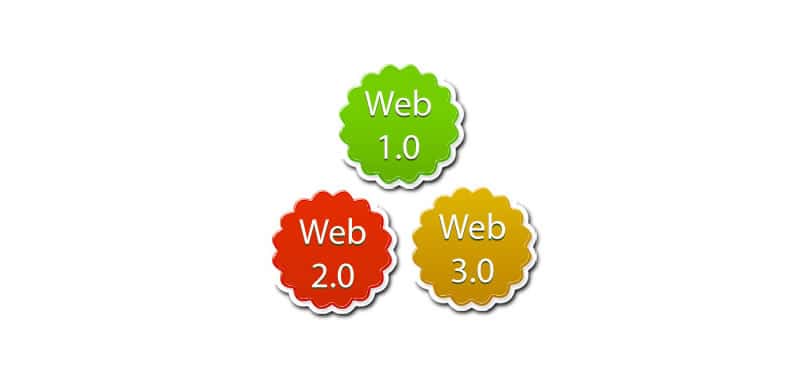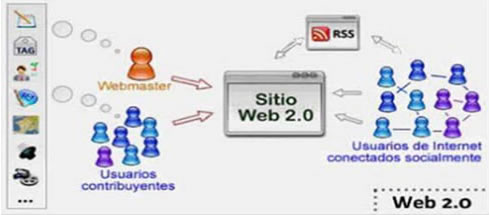Evolution of the Web 1.0, 2.0 & 3.0 - Differences & features
The Web came up with basic browsers that only interpreted text, then HTML appeared making the pages more friendly and easy to access.

Web 1.0
Web 1.0 beganin the 60s, as themost basic form, with text-only browsers such as ELISA, then emerged HTML that made pages more pleasant to the eye, and the first visual browsers like Netscape and Internet Explorer.
This Web is read-only, the user can’t interact with the page content, it is limited to what the Webmaster uploads to the website.

Structure of the operation of the Web 1.0
Typical design elements of a Web 1.0 site include:
- Static pages for the user's visit
- The use of frames or framesets
- Own HTML extensions such as blinking and marquees, labels introduced during the browser wars
- Guestbooks
- GIF buttons
- HTML forms sent via e-mail
Web 2.0
The termWeb 2.0, labeled by Tom O 'Reilly in 2004 refers to a second generation of models of Web pages.
It is understood as a new philosophy of navegation, a new way to participate in the network.
His predecessor, Web 1.0, has a more static navigation model, this new format encourages active participation.
The user is no longer limited to access to information, rather creates it.

Structure of the operation of the Web 2.0
It is understood by Web 2.0 as all those Internet services which database can be modified in content, format, or both.
Users have total control of their information.
Decentralization of the Internet for the clientthat is, in turn, server, is produced.
This format facilitates interaction between users, reflected especially in the use of social media and enlarging collective intelligence.
The 2.0 model has provoked a strong social impact. The user has more power in the network than ever, as he now has the ability to express themselves freely and to be heard: have a say on the Internet.
Simplifies Web site usability and saves the user time.
Standardizes languages for better use of the re-using of code, allowing better interoperability between applications and machines (software-hardware).
It also facilitates the recognition or detection of shortages or new formsof application use and the convergence between media and contents.
The principles of the model 2.0 are the following:
- The Web is a platform
- The information is what moves the Internet
- Internet effects are in turn moved by the participation
- The different characteristics of the network can be developed independently
Web 3.0
A new term, Web 3.0, appeared to relate the semantic Web.
It is an extension of the World Wide Web, by which data can be found in any language and in formats suitable for all types of software.
It is based primarily on information and its structure, which allows the user to find it more quickly and effectively.
Web 3.0 is a neologism used to describe the evolution of the use and interaction in the network through different paths.
This includes transforming the network into a database, a move aimed at making content accessible by multiple applications that are not just the browser, the push of artificial intelligence technologies, the geospatial web, 3D Web.
It is often used by the market to promote the improvements about the Web 2.0
Another possible way for Web 3.0 is the direction to the 3D vision, led by the Web 3D Consortium.
This would involve transforming the web into a series of 3D spaces, taking further the concept proposed by Second Life. This could open new ways to connect and collaborate, using three-dimensional spaces.
The term Web 3.0 first appeared in 2006 in an article by Jeffrey Zeldman, critic of the Web 2.0and associated to technologies such as AJAX.
Now there is a considerable debate about what Web 3.0 means, and what is the correct definition.
CITE ARTICLE
For homework, research, thesis, books, magazines, blogs or academic articles
APA Format Reference:
Delgado, Hugo. (2019).
Evolution of the Web 1.0, 2.0 & 3.0 - Differences & features.
Retrieved Nov 09, 2025, from
https://disenowebakus.net/en/web-evolution






